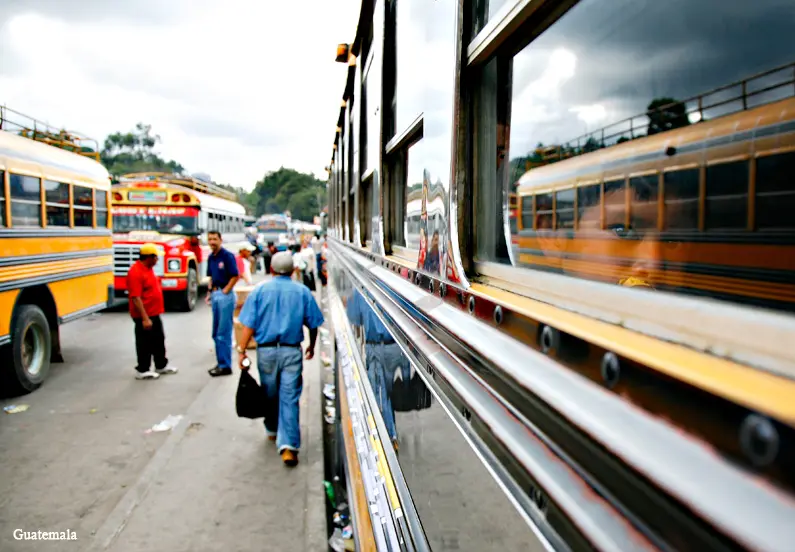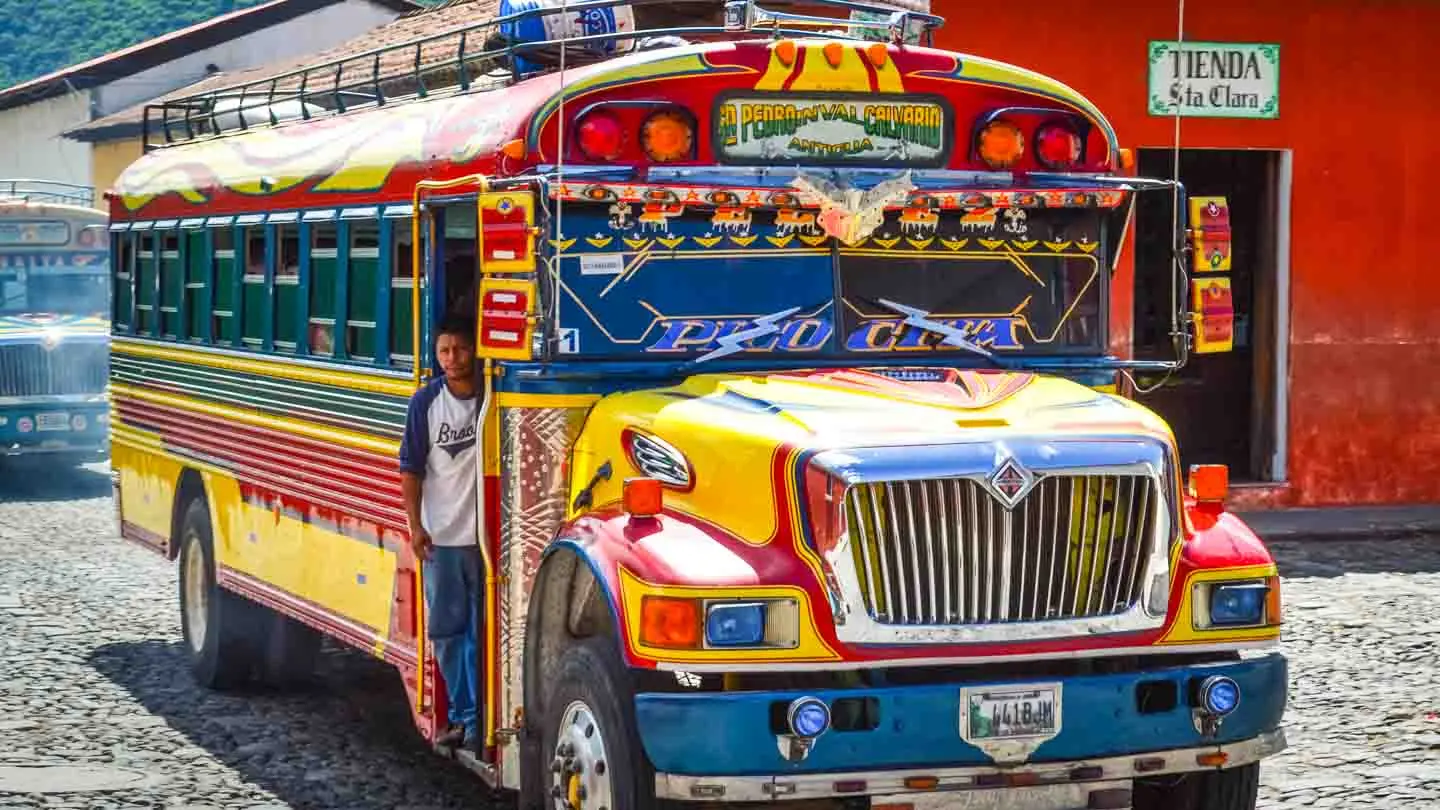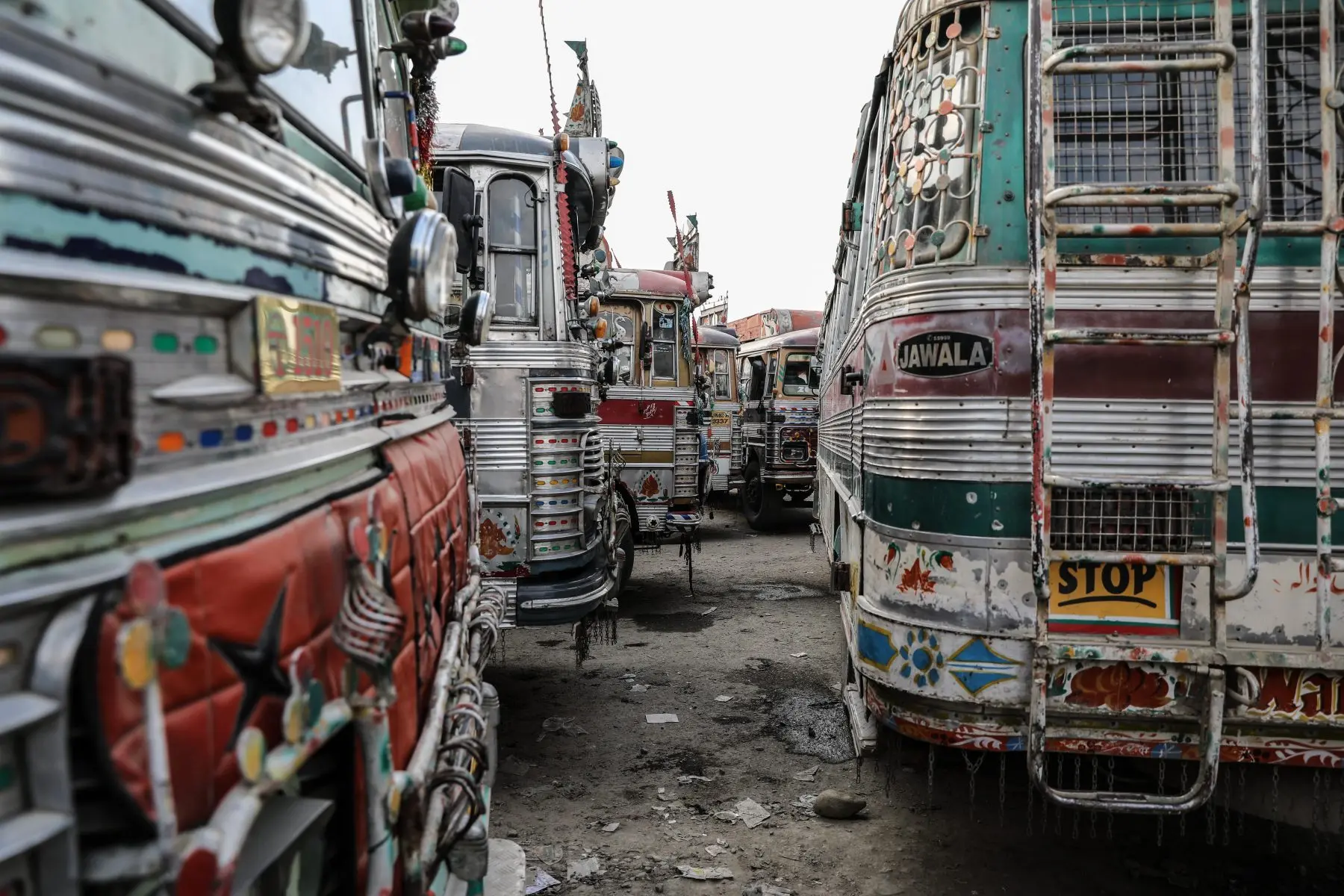As a traveler, outside the place where you stay the night, you will spend most of your time on the road. And unless you are on a multi-day hike or a bike ride, that means some mode of transportation. As someone who has countless hours of experience with pretty much every mode of transportation, from ox-drawn cart to a hot air balloon, I will do several posts on various modes of local transport in most countries and give you some tips on each one. I would like to start with the most common and obvious one – the bus.
For majority of countries, a bus or a minibus is the primary means of getting around. These typically take you from A to B within a country or across borders with little or no frills. There are some exceptions, such as long haul overnight buses in South America That continent is really a long distance bus paradise. Most countries there do not have any other means of transport, so the entire population takes buses between cities.
So let’s start with inter-city buses. As a rule, these are reliable and reasonably cheap, although once again in South America, you can actually take 1st class buses, and even then, they are not particularly expensive given the few extra comfort perks you’d get, such as a bigger and a more reclining seat and sometimes, even a hot meal! Remember that if you are taking an overnight bus, you are saving on a night’s accommodation, and thus it is a good idea to get the best class seat available to get the best quality sleep you can. Which will be still worse than even in a noisy hostel room, trust me – unless you’re one of those lucky bastards who can just carelessly doze off anywhere and in any position. In other words, anything to improve your quality of sleep on a bus is worth the money.

If you are traveling solo, you’d always a want to get a window seat. That is, unless you have a small bladder or drank too much beer before your ride. Window seat allows you to lean a bit more using the wall or the window, and you can even use your travel pillow or a jacket, if you don’t have one, to cushion your head. Also, you’d probably want to look out the window while there is light. After all, you are a traveler and want to see what’s going on outside.
Of course, if you travel with a girlfriend, she might want the window seat, and as a gentleman that you are, you’d offer it to her (see post on pros and cons of travelling with a girlfriend).
Typically, intercity buses have a luggage compartment, and the driver or the assistant will take your backpack before you board. Sometimes you’d get a tag or a ticket, sometimes you won’t. Don’t worry – your bag will be safe 99% of the time. There used to be cases of baggage theft from overnight buses in Thailand, but even there it should be quite rare. Of course, you should always keep your valuables with you in your carry-on daypack. Although therein lies a dilemma: what if you fall asleep? Would it still be safe? If your ride is long or overnight, makes sure your backpack with valuables is either between your legs or that one of the straps is around your leg or arm. This should help you wake up if anyone tries to steal your pack or tamper with it.
Your bus ride won’t always be comfy. There will be times you’ll barely have a seat – you might have to sit on a bucket, or somebody’s lap, or simply stand. It’s all part of backpacking. One of my personal worst rides was from Legazpi to Manila on a 12-hour night bus that was completely full, and I had to sit directly on the floor between the aisles the entire ride. Let’s just say, that is not something I would recommend or wish to anyone.
While South America has some of the best inter city buses in the world, certain Central-American countries such as Guatemala or Nicaragua still use the so-called chicken buses – old American school buses, usually repainted into some kitschy macho or religious theme. Inside, they are exactly the same school buses they were in Texas or Arizona. If you went to school in the US, remember now tight those spaces between seats were? Well, that’s the legroom you’re going to get on a chicken bus, except you are probably a bit bigger now than you were in 8th grade. Still, they are cheap, fun and a great way to meet some locals, and yes, their chickens. And distances in Central America are rarely more than a couple of hours long.

One great thing you will see in most third world countries is that you’ll never have to wait too long for your bus. They don’t usually follow schedules – they leave as they get full enough. Most buses are privately owned and are a source of income for the driver and a helper or two, often his sons, who would collect your ticket fare and keep shouting the destination name out the open doors to bring in more passengers. It always amused me how tireless these helpers can be. It seems that they hope that they can convince a random person on the street to go to the place of their destination just by shouting it’s name, and yet that’s exactly what happens. I mean, of course, those new passengers must actually need to go there, but it surely seems that way. This tactic will often add a huge chunk of time to your journey, so beware of that if you need to be somewhere at a certain time.
Most fancy overnight buses will actually follow a timetable; so don’t worry about too many stops afterwards. But generally, your driver is your captain, your guiding star and your dictator. You are completely at his whim. If he wants to blast AC, he will. If he wants to play loud heavy metal or cheesy techno pop out of his horrible speakers, he will. If he wants to smoke, he will. And there is little you can do about it. Trust me, because I have tried many times.

Now, you’ve arrived at your final stop – typically a bus station or a place where buses congregate. Some of these are in town centers, if you’re lucky, and some are miles away and beyond city limits, such as in Myanmar and Turkey. To get to your hotels, you will have to deal with taxi (tuk-tuk, minibus) driver.
I will talk about taxis in one of the next posts.
